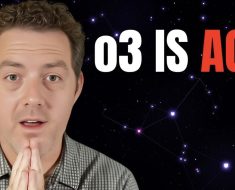
This guide is designed to show you how to learn Geospatial Python with the help of AI tools like ChatGPT and Google Bard. Geospatial Python has emerged as a vital skill for professionals delving into the world of geographical data analysis. But where do you begin? You’ll be pleased to know that artificial intelligence, particularly ChatGPT, is revolutionizing the way we learn these complex subjects. Let’s explore how you can harness the power of AI to master Geospatial Python in 2024.
Diving into Geospatial Python with ChatGPT
Your journey starts by familiarizing yourself with ChatGPT. Whether it’s GPT 3.5, GPT4, or a custom model, each version brings its unique strengths to your learning experience. Imagine having a virtual tutor at your fingertips, ready to tailor its knowledge to your specific needs.
Laying the Groundwork
ChatGPT can kickstart your learning journey by providing the basics of Geospatial Python. But here’s a pro tip: the effectiveness of your learning depends on how well you phrase your questions. Detailed prompting isn’t just helpful—it’s essential.
Guided Learning with Precision
This is where the magic happens. By giving precise instructions, you can guide ChatGPT to create a structured learning path for you. From the fundamentals of Python to the nuances of spatial data types, the AI breaks down complex concepts into manageable steps.
Interactive Lessons and Remembering Inputs
ChatGPT isn’t just a one-off advisor; it’s an interactive learning tool. It remembers your previous queries, allowing you to build upon past lessons seamlessly. This creates a personalized learning experience, with lessons evolving as your understanding deepens.
Expanding Horizons with Google Bard
Google Bard, another remarkable AI tool, complements your learning by offering internet-based resources. It’s like having a research assistant who can quickly bring you blog posts, videos, and tutorials to enhance your understanding of Geospatial Python.
Unlocking Advanced Features of GPT-4
GPT-4 isn’t just another iteration; it’s a gateway to advanced learning. With features like internet search, GPT-4 can teach you about tools and libraries beyond its initial programming. This means you’re always at the cutting edge of Geospatial Python.
Hands-on Practice with Coding Challenges
Theory is vital, but practice is key. GPT-4 excels at creating coding challenges and scaffolding code for practical application. Imagine building an interactive map of global air quality from scratch – that’s the kind of project you can embark on.
Custom GPT Models for Personalized Paths
Every learner is unique, and so can be your GPT model. A custom GPT model, tailored to your learning style and goals, can offer more focused and relevant learning paths. It’s like having a bespoke curriculum designed just for you.
Looking Ahead: Resources for the Future
The learning doesn’t stop here. Plans for more comprehensive tutorials on modern GIS with Python are underway. These will provide deeper insights and more advanced applications of Geospatial Python.
Embracing AI for Geospatial Python Mastery
As you can see, learning Geospatial Python in 2024 is an exciting journey, made even more engaging and effective with AI tools like ChatGPT and BARD. From basics to advanced applications, these AI platforms offer a dynamic and interactive approach to learning. Remember, the key to mastering Geospatial Python lies in how you interact with these tools. With detailed prompting and a willingness to explore, you’re set for an enriching learning experience.
Source Matt Forest
Image Credit: Árpád Czapp
Here are some more useful ChatGPT articles:
Filed Under: Guides
Latest Geeky Gadgets Deals
Disclosure: Some of our articles include affiliate links. If you buy something through one of these links, Geeky Gadgets may earn an affiliate commission. Learn about our Disclosure Policy.



